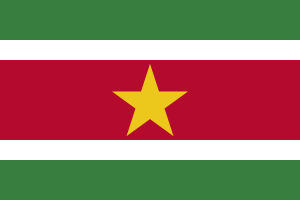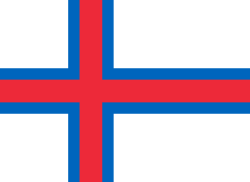Customs territory
A customs territory is a geographic territory with uniform customs regulations. Existing customs territories consists fall into several types:
- A sovereign state
- A trade bloc that has a customs union
- An autonomous or dependent territory that is granted by the sovereign government some degree of independence in foreign trade and customs policy.
There are also some unregulated lands (usually uninhabited) not part of any customs territory.
As of 2010, most customs unions rarely operate as a single entity and are represented in relations with other customs territories either jointly by their member states governments and the union institutions or by only the member states. Thus, in practice, they rarely appear as a single customs territory and instead they operate as a multiple separate customs territories that have the same or similar customs tariff. The European Union (EU) is the only trade bloc in which the union institutions have exclusive competence over the common external tariff and thus sign and ratify agreements with foreign states without direct participation of the EU member states.[1] The EU is also the only trade bloc member of the World Trade Organization, but the EU member states are continuing their own separate memberships, as not all of the WTO issues fall within the scope of exclusive EU competences.
The governing organs (government or other responsible administrative entity for the states and territories, secretariat or similar international organization body for the trade blocs) of the customs territories negotiate and sign trade agreements. In some cases the negotiations are conducted by a trade bloc secretariat, but the actual agreement is signed by the member states of the trade bloc. It is also possible for a group of customs territories, that do not form a customs union (regardless if they cooperate as a different type of trade bloc), to negotiate trade agreements together and to sign the resulting agreement individually (for example, the European Free Trade Association).
A customs territory usually has inspection stations at its borders, but this is not always the case. For example, there are no border checks between the EU customs territory and the Switzerland—Liechtenstein customs territory, since both are part of the Schengen Area. There can also be border checks between two parts of the same customs territory. For example, there are border checks between the Schengen Area portions of the EU customs territory and those portions in the Common Travel Area formed by the United Kingdom, Crown Dependencies, and Ireland. Another example is the border checks between Israel and the Palestinian Territories, which are in a customs union. The European Union example is particularly complicated, since it also has different boundaries for EU VAT area, the EU excise duty area, the area where EU law applies, and the area considered by the EU statistics agency.
List of customs territories
Sovereign states (including freely associated states), which typically have independent customs policies, are enumerated on the list of sovereign states. These include both freely associated states and partially recognized states.
Countries which are members of a customs union, which in some cases may be considered a single customs territory:[2]
- Andean Community of Nations (CAN)
- Caribbean Community (CARICOM)
-
 Antigua and Barbuda
Antigua and Barbuda -
 Barbados
Barbados -
 Belize
Belize -
 Dominica
Dominica -
 Grenada
Grenada -
 Guyana
Guyana -
 Jamaica
Jamaica -
 Montserrat
Montserrat -
 Saint Kitts and Nevis
Saint Kitts and Nevis -
 Saint Lucia
Saint Lucia -
 Saint Vincent and the Grenadines
Saint Vincent and the Grenadines -
 Suriname
Suriname -
 Trinidad and Tobago
Trinidad and Tobago - Other CARICOM member states, The Bahamas and Haiti are not a part of the customs union arrangement although Haiti is in the process of acceding.
-
- East African Community (EAC)
- Eurasian Customs Union
-
 Armenia
Armenia -
 Belarus
Belarus -
 Kazakhstan
Kazakhstan -
 Kyrgyzstan
Kyrgyzstan -
 Russia
Russia - Russia unilaterally negotiated a free trade agreement (excluding sugar, alcohol, and tobacco) with
 Abkhazia and
Abkhazia and  South Ossetia.[3][4] These areas are claimed by
South Ossetia.[3][4] These areas are claimed by  Georgia, which is not a member of the customs union.
Georgia, which is not a member of the customs union.
-
- European Union Customs Union (internal border checks) - includes the territory of
 European Union member countries, excepting many areas outside of continental Europe, and some exclaves and border areas that belong to the customs territory of Switzerland.[5] (See Special member state territories and the European Union for a detailed list.) Various treaties extend the EU customs area to include the non-EU states of:
European Union member countries, excepting many areas outside of continental Europe, and some exclaves and border areas that belong to the customs territory of Switzerland.[5] (See Special member state territories and the European Union for a detailed list.) Various treaties extend the EU customs area to include the non-EU states of:
-
 Andorra (excluding agricultural products)
Andorra (excluding agricultural products) -
 Monaco
Monaco -
 San Marino
San Marino -
 Turkey (excluding agricultural products)
Turkey (excluding agricultural products)
-
-
 Israel —
Israel —  Palestinian Authority customs union (internal border checks)
Palestinian Authority customs union (internal border checks) - Southern Common Market (MERCOSUR)
- Southern African Customs Union (SACU)
-
 Switzerland —
Switzerland —  Liechtenstein customs union (no external border checks)
Liechtenstein customs union (no external border checks)
The customs territory of the ![]() United States includes the fifty states, the District of Columbia, and
United States includes the fifty states, the District of Columbia, and ![]() Puerto Rico.[6] The following dependent territories are administered separately:[7]
Puerto Rico.[6] The following dependent territories are administered separately:[7]
-
 American Samoa - Government of American Samoa
American Samoa - Government of American Samoa -
 Guam - Government of Guam
Guam - Government of Guam -
 Northern Mariana Islands - Government of the Commonwealth of the Northern Mariana Islands
Northern Mariana Islands - Government of the Commonwealth of the Northern Mariana Islands - United States Minor Outlying Islands
- Wake Island - Department of the Air Force General Counsel
- Midway Islands - Department of the Navy
- Johnston Atoll - none
- (Other islands are uninhabited)
-
 US Virgin Islands - Federal rules as modified by the Virgin Islands legislature, but implemented by U.S. Customs and Border Protection
US Virgin Islands - Federal rules as modified by the Virgin Islands legislature, but implemented by U.S. Customs and Border Protection
The main customs territory of the ![]() People's Republic of China does not include:
People's Republic of China does not include:
-
 Hong Kong, autonomous territory of PR China
Hong Kong, autonomous territory of PR China -
 Macau, autonomous territory of PR China
Macau, autonomous territory of PR China -
 Taiwan (Republic of China) (officially titled as Separate Customs Territory of Taiwan, Penghu, Kinmen, and Matsu or Chinese Taipei in the WTO)[8]
Taiwan (Republic of China) (officially titled as Separate Customs Territory of Taiwan, Penghu, Kinmen, and Matsu or Chinese Taipei in the WTO)[8]
The following dependent territories have independent customs policies from the main part of the sovereign country of which they are a part:
-
 Anguilla (British Overseas Territory)
Anguilla (British Overseas Territory) -
 Aruba (Netherlands territory)
Aruba (Netherlands territory) -
 Bermuda (British Overseas Territory)
Bermuda (British Overseas Territory) -
 Bouvet Island (Norway territory)
Bouvet Island (Norway territory) -
 British Indian Ocean Territory (British Overseas Territory)
British Indian Ocean Territory (British Overseas Territory) -
 Cayman Islands (British Overseas Territory)
Cayman Islands (British Overseas Territory) -
 Ceuta (Spanish territory)
Ceuta (Spanish territory) -
 Christmas Island (Australian territory)
Christmas Island (Australian territory) -
_Islands.svg.png) Cocos (Keeling) Islands (Australian territory)
Cocos (Keeling) Islands (Australian territory) -
 Falkland Islands (British Overseas Territory)
Falkland Islands (British Overseas Territory) -
 Faroe Islands (Danish territory)
Faroe Islands (Danish territory) -
 French Polynesia (French territory)
French Polynesia (French territory) - French Southern and Antarctic Lands (French territory)
-
 Gibraltar (British Overseas Territory)
Gibraltar (British Overseas Territory) -
 Greenland (Danish territory)
Greenland (Danish territory) -
 Heard and McDonald Islands (Australian territory)
Heard and McDonald Islands (Australian territory) -
 Mayotte (French territory)
Mayotte (French territory) -
 Melilla (Spanish territory)
Melilla (Spanish territory) -
 Montserrat (British Overseas Territory)
Montserrat (British Overseas Territory) - Netherlands Antilles (Netherland territories)
-
 New Caledonia (French territory)
New Caledonia (French territory) -
 Norfolk Island (Australian territory)
Norfolk Island (Australian territory) -
 Pitcairn Islands (British Overseas Territory)
Pitcairn Islands (British Overseas Territory) - Saint Helena, Ascension and Tristan da Cunha (British Overseas Territory)
-
 Saint Pierre and Miquelon (French territory)
Saint Pierre and Miquelon (French territory) -
 South Georgia and the South Sandwich Islands (British Overseas Territory)
South Georgia and the South Sandwich Islands (British Overseas Territory) -
 Tokelau (New Zealand territory)
Tokelau (New Zealand territory) -
 Turks and Caicos Islands (British Overseas Territory)
Turks and Caicos Islands (British Overseas Territory) -
 British Virgin Islands (British Overseas Territory)
British Virgin Islands (British Overseas Territory) -
 Wallis and Futuna (French territory)
Wallis and Futuna (French territory)
Antarctica has no domestic government; the Antarctic Treaty System governs administration of various expeditions by sovereign states.
See also
- List of free ports
- Customs area
- Economic integration
- Special Member State territories and the European Union - multiple separate customs territories
- List of World Customs Organization member states
References
- ↑ Example: Interim Agreement on trade and trade-related matters between the European Community, of the one part, and the Republic of Montenegro, of the other part.
- ↑ see the list of customs unions for references
- ↑ http://voiceofrussia.com/news/2013_12_23/Putin-ratifies-free-trade-agreements-with-Abkhazia-S-Ossetia-6213/
- ↑ http://www.eurasianet.org/node/67863
- ↑ Some of the special EU member state territories are covered by EU law (Art.52 TEU and Art.355 TFEU), but nevertheless remain outside the EU customs territory. "Annex 1: Overview of European Union countries" (PDF). Retrieved 21 Apr 2014.
- ↑ 19 C.F.R. 101.1
- ↑ 19 C.F.R. 7.2
- ↑ Separate Customs Territory of Taiwan, Penghu, Kinmen and Matsu (Chinese Taipei), World Trade Organization, retrieved 2014-09-10,
Chinese Taipei has been a member of WTO since 1 January 2002.
External links
- "List of non-EU countries". Retrieved 2014-04-12.